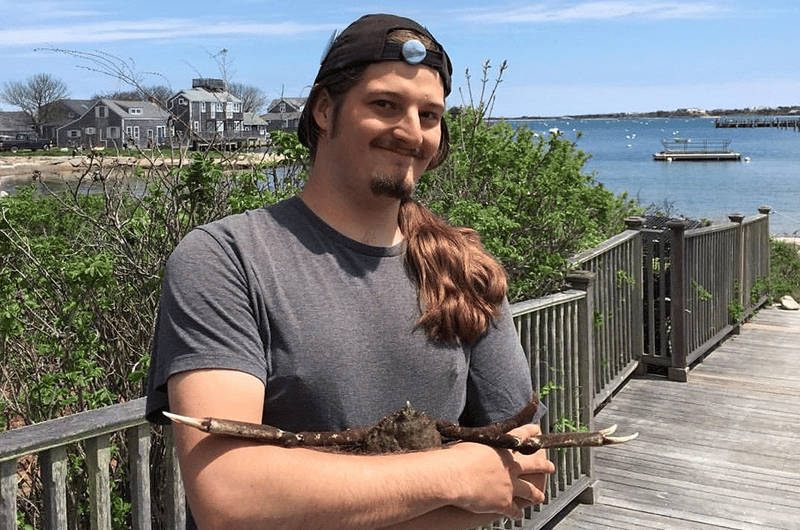by Catherine Macallister
Purple flags were flying high at Nantucket beaches as summer waters warm up these past few weeks, indicating hazardous marine life in the water. In this case the hazard was jellyfish. These non-vertebrae, no-brained creatures are gelatinous zooplankton, and they happen to be the topic for an upcoming summer lecture at The Maria Mitchell Association. The timing is perfect as flags are up daily on the beaches for the jellies that are floating in the waters near shore. Aquarium manager and aquarist, Jack Dubinsky will be sharing information about gelatinous zooplankton and the MMA’s jellyfish breeding program this Wednesday, September 4, from 7 to 8 pm.
The lecture will feature “information about the pros and cons of being a gelatinous zooplankton…both the biological and the physiological,” says Dubinksy, who will be sharing all about the jellyfish and other species of gelatinous zooplankton on Nantucket. Additionally, he will be going over ways to report the zooplankton you see on Nantucket and answering some frequently asked questions. While there have not been specific studies on the abundance of jellyfish from year to year, Dubinksy will discuss why they may appear with more frequency at certain times of the year.
Dubinsky began at the MMA as a young explorer when he was only 12 years old. He participated in the Marine Ecology Field Trip and “fell in love with marine science,” he says. He grew up in New York and spent summers on Nantucket, where he returned to the Maria Mitchell Association again and again, first as a volunteer, then as a college intern at age 19, finally returning at 21. In addition to being the Manager at the Aquarium, Dubinsky is also a research associate with DEEPC or Diversity, Ecology, Ecophysiology of Ctenophores. Ctenophores are comb jellies and can be found in the waters around Nantucket. Dubinsky collects the jellies, which are then studied in a lab. His research focuses on the movement and energy of the jellies as well as the effects of shallow water versus deep ocean. Dubinsky also photographs comb jellies. His experience as a researcher and staff member at MMA will undoubtedly result in an interesting and knowledgeable lecture.
He first presented this lecture during the 2019 Winter Lectures series but has “updated it since,” including a new graph that reflects findings during this spring and summer. Dubinsky says the goal is that everyone “comes out knowing more about gelatinous zooplankton on Nantucket.” Dubinksy will also discuss the MMA’s breeding program and what types of jellyfish the program works with, including (he hopes) the addition of moon jellies.
And while jellyfish may mean purple flag days at the beach, the conditions for swimming remain inviting. Plus, the abundance of jellyfish may draw in another island visitor: the leatherback turtle. The leatherback is the largest sea turtle, reaching sizes of up to 1500 pounds. This giant sea turtle has been known to frequent the waters of Nantucket in the later summer months, looking for one of its favorite prey: jellyfish.
Aquarist Jack Dubinsky’s Wednesday lecture on jellyfish and other gelatinous zooplankton and the part they play in Nantucket’s biodiversity will be held at 33 Washington Street. Admission is $10 (free for MMA members).
The Maria Mitchell Association honors the legacy of famed female astronomer, Maria Mitchell, who believed in a “hands-on” approach to learning and life. You never know what you may learn at the MMA, and like Jack Dubinksy, you may find that one program could open your eyes to a new and exciting subject. You’ll find more about MMA lectures and programs yearround at mariamitchell.org.

